The SandForce Roundup: Corsair, Kingston, Patriot, OCZ, OWC & MemoRight SSDs Compared
by Anand Lal Shimpi on August 11, 2011 12:01 AM ESTDiffering Firmwares
OCZ's exclusive on the SF-2281 has finally lifted and now we're beginning to see an influx of second generation SandForce drives from other vendors. Make no mistake, although these drives may look different, have creative new names and different PCBs - they should all perform the same if you know what you're comparing.
OCZ sells three lines of SF-2281 based drives: Vertex, Agility and Solid. The Vertex 3 uses synchronous NAND (read: faster), while the Agility 3 and Solid 3 use slower asynchronous NAND.
Other companies are following suit. Asynchronous NAND is more readily available and cheaper, so don't be surprised to find it on drives. So far everyone seems to be following OCZ's footsteps and creating separate lines for the synchronous vs. asynchronous stuff.
The table below should break it down for you:
| SandForce SF-2281 SSD Comparison | ||||||
| Product | NAND Type | Capacities Available | Latest FW Available | Price for 120GB Drive | ||
| Corsair Force GT | Sync IMFT | 60GB, 120GB, 240GB | Corsair v1.3 (SF v3.20?) | $248.49 | ||
| Kingston HyperX | Sync IMFT | 120GB, 240GB | SF v3.20 | $269.99 | ||
| MemoRight FTM Plus | Sync IMFT | 60GB, 120GB, 240GB, 480GB | MR v1.3.1 | N/A | ||
| OCZ Agility 3 | Async IMFT | 60GB, 120GB, 240GB | OCZ v2.11 (SF v3.20) |
$209.99 | ||
| OCZ Vertex 3 | Sync IMFT | 60GB, 120GB, 240GB, 480GB | OCZ v2.11 (SF v3.20) |
$254.99 | ||
| OCZ Vertex 3 MAX IOPS | Toggle | 120GB, 240GB | OCZ v2.11 (SF v3.20) |
$284.99 | ||
| OWC ME Pro 6G | Toggle | 120GB, 240GB, 480GB | SF v3.19 | $279.99 | ||
| OWC ME Pro 6G | Sync IMFT | 120GB, 240GB, 480GB | SF v3.19 | $279.99 | ||
| Patriot Pyro | Async IMFT | 60GB, 120GB, 240GB | SF v3.19 | $209.99 | ||
| Patriot Wildfire | Toggle | 120GB, 240GB, 480GB | SF v3.19 | $284.99 | ||
The four drives we're looking at today are a mixture of synchronous and asynchronous. The newly announced Patriot Pyro uses async NAND while everything else uses some form of synchronous Flash memory. OWC recently switched to using 32nm Toggle NAND in an effort to boost performance to OCZ MAX IOPS levels.
SandForce delivers firmware to all of its partners, however the schedules don't always match up. OCZ gets first dibs and renames its firmware to avoid direct comparisons to other drives. There are cases where OCZ may have some unique features in its firmwares but I don't believe that's the case with its latest revision.
Corsair and MemoRight do the same renaming, while the rest of the players stick to the default SandForce firmware version numbers. Everyone that shipped us drives seems to be sticking to either the latest firmware revision (3.20) or the one prior to it (3.19). Performance hasn't changed too much between all of these revisions, the majority of the modifications are there to squash this BSOD issue.
Corsair Force GT
The Force GT is Corsair's answer to OCZ's Vertex 3. The GT ships with a custom PCB design and is outfitted with IMFT (Micron branded) NAND running in synchronous mode. The 120GB sample we were sent for review has 16 NAND packages each with one 8GB MLC NAND die. Corsair just released its first firmware update for the Force GT, bringing it up to version 1.3 in Corsair-speak. Given the timing of the release, I'm going to assume this is Corsair's rebrand of the SandForce 3.20 firmware.
The Force GT is the cheapest 120GB SF-2281 based drive with synchronous NAND in the roundup. The drive comes with a 3 year warranty from Corsair.
Kingston HyperX
As Kingston's first SandForce SSD, the HyperX looks great. Although it doesn't really matter once you get it in the system, the HyperX enclosure has the most heft to it out of all of the SF-2281 drives we've reviewed. Part of the added weight comes from the two thermal pads that line the top and bottom of the case:
Kingston annoyingly uses 1.5mm hollow hex screws to keep the drive together, our biggest complaint from a physical standpoint. As a standalone drive the HyperX is our second most expensive here at $269.99 for 120GB.
The drive ships with a custom PCB and the latest SandForce firmware (3.20). Kingston sent along the upgrade kit which includes a 3.5" drive sled, USB enclosure, SATA cable and Kingston screwdriver:
MemoRight FTM Plus
We haven't had a MemoRight drive in for review since the early days of SSDs on AnandTech. The FTM Plus is a vanilla SF-2281 drive with SandForce's 3.19 firmware. The PCB design is custom although the NAND configuration is pretty standard. We got a 240GB drive in for review with 16 NAND devices and two 8GB 25nm IMFT die per chip.
OWC Mercury Extreme Pro 6G
The last time we reviewed OWC's Mercury Extreme Pro 6G we were a bit surprised by the presence of a rework on a shipping SSD. Since then a couple of things have changed. For starters, the rework is gone as you can see from the images above. While these drives use standard 25nm IMFT synchronous NAND, OWC has recently switched over to 32nm Toggle NAND - giving the Mercury Extreme Pro 6G the same performance as the MAX IOPS drives from OCZ or the Patriot Wildfire. We don't have the Toggle NAND drives in yet but I'd expect performance similar to the MAX IOPS for the updated drives. The branding and pricing haven't changed, just the performance.
The Mercury Extreme Pro 6G is offered with a 5 year warranty from OWC. It's also the most expensive SF-2281 based on IMFT NAND with a 120GB drive costing $279.99.
Patriot Pyro
While the Wildfire is Patriot's high-end SF-2281 offering, the Pyro is its more cost effective solution. The Pyro's savings come courtesy of its asynchronous NAND, putting it on par with an Agility 3. The Wildfire by comparison is akin to OCZ's MAX IOPS drives. Patriot uses the same PCB layout as OWC. The drive ships with firmware revision 3.19 and a 3-year warranty.
The Test
| CPU | Intel Core i7 2600K running at 3.4GHz (Turbo & EIST Disabled) - for AT SB 2011, AS SSD & ATTO |
| Motherboard: | Intel H67 Motherboard |
| Chipset: | Intel H67 |
| Chipset Drivers: | Intel 9.1.1.1015 + Intel RST 10.2 |
| Memory: | Corsair Vengeance DDR3-1333 2 x 2GB (7-7-7-20) |
| Video Card: | eVGA GeForce GTX 285 |
| Video Drivers: | NVIDIA ForceWare 190.38 64-bit |
| Desktop Resolution: | 1920 x 1200 |
| OS: | Windows 7 x64 |


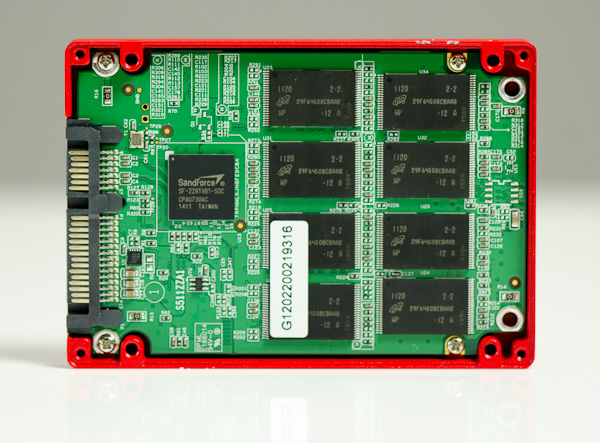



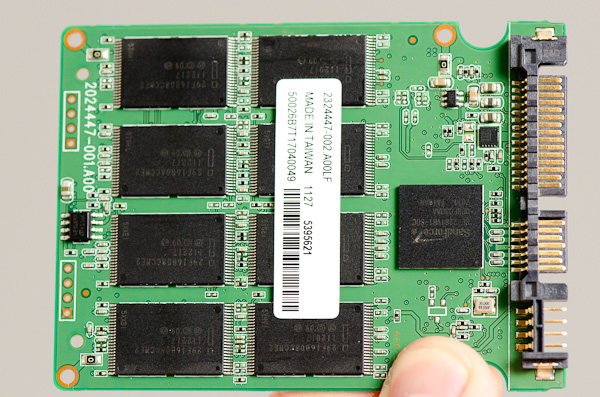
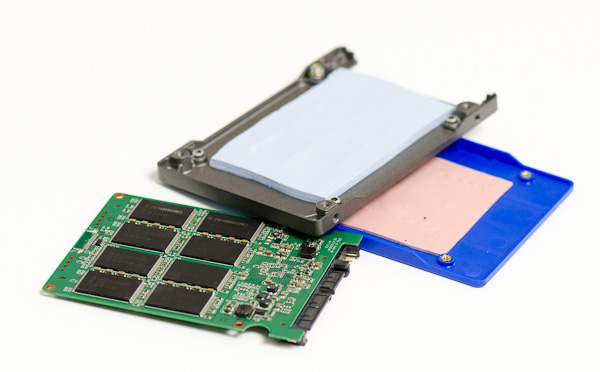
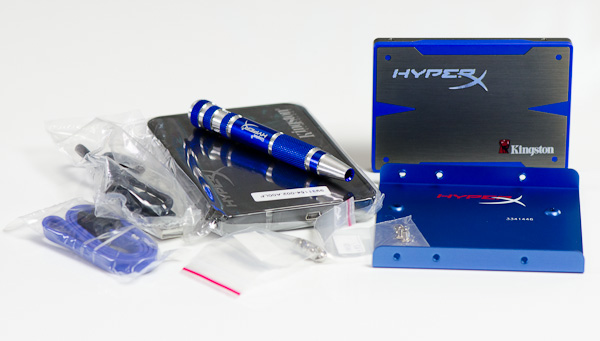






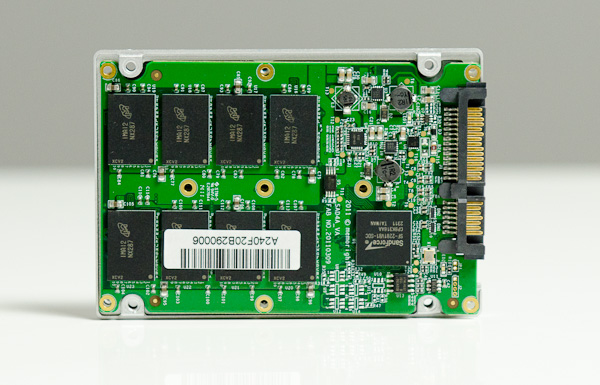




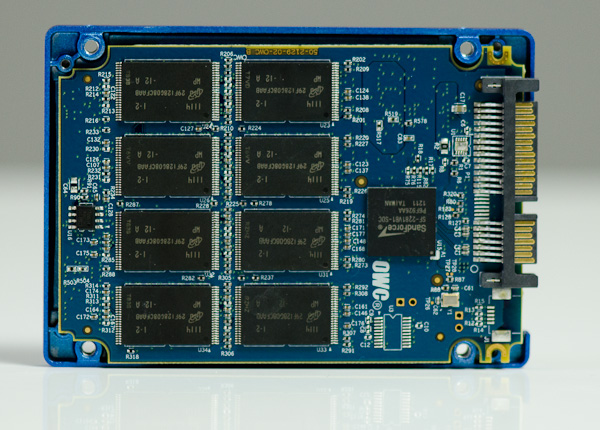
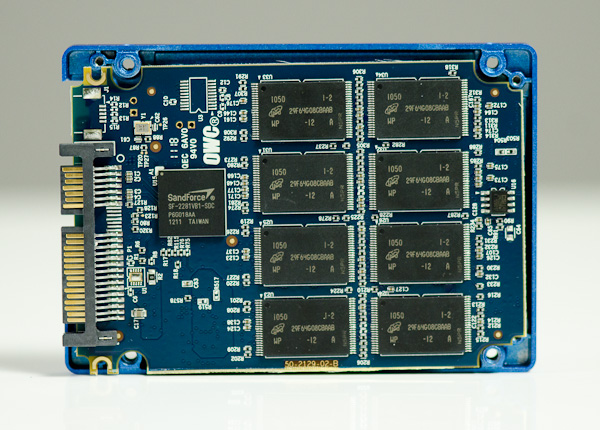


















90 Comments
View All Comments
Ipatinga - Thursday, August 11, 2011 - link
So, the Corsair Force GT is really going against OCZ Vertex 3? I thought it was agains Vertex 3 Max IOPS.In this case, the Corsair Force 3 is going after Agility 3?
And Corsair Performance 3 is going after Solid 3?
Thanks :)
Would like to hear more about NAND Flash that is Async and Sync and Toogle.
bob102938 - Thursday, August 11, 2011 - link
There are some factors that were not considered on the first page of the article. The number of dies per wafer is important, but you are forgetting the cost of producing a flash memory wafer vs a VLSI wafer. Flash memory is a ~20 layer process that has margins for error which can be worked around. VLSI is a 60+ layer process that has 0 margin for error. Producing flash memory wafers is more than an order of magnitude cheaper than producing the same-size VLSI wafer. Additionally, turnaround time on a flash wafer can be achieved in ~20 days, whereas a VLSI wafer can require 3 months.Also the internal cost of a 300mm flash memory wafer is more like $1000. A VLSI wafer is around $8000.
philosofool - Thursday, August 11, 2011 - link
I don't want to blame the victims, end users. Obviously, manufacturers have a responsibility to QA.Still, when you look at the market forces here, it seems obvious that market forces are driving the problem.
Manufacturer makes the COOL drive that gets the best performances marks of any drive out there. One year later, the COOLER drive is released. No one wants a COOL drive anymore. Plus, the margin making COOL drives is so small, you can't drop your price on a COOL drive to make it an attractive "midrange" option. So you have to start developing a new controller to make something down-right freezing.
Because there's such an emphasis on performance, controllers and the drives they run become obsolete before a water-tight reliable version of the controller can be made. Of course, they're not really obsolete--there's nothing wrong with the X-25M controller--but they can't compete in a market with drives that show twice the random read performance of an unreliable competitor.
Constant R&D on new controllers and the demand for performance mean that reliability takes a backseat. You can't sell COOL drives as long as someone makes a COOLER drive, even if cooler drives have reliability problems. Think about yourself: would you buy an X-25 M knowing that you could get a Vertex 3 instead?
Bannon - Thursday, August 11, 2011 - link
I built a system on an Asus P8Z68 Deluxe motherboard and used two Intel 510 250GB drives with it. One is the system drive and the other data drive with firmwares PWG2 and PWG4 respectively. To date I have not experienced a BSOD BUT my system drive will drop from 6Gbs to 3Gbs for no apparent reason and stay there until I power the system off. My data drive is rock solid at 6Gbs and stays there. I've just started working with Intel so I don't know where that is going to lead. Hopefully it end up with a new drive with the latest firmware and 6Gbs performance. Given my druthers I'd rather have this problem than the Sandforce BSOD's but I wanted to point out that everything isn't perfect in Intel-land.Coup27 - Thursday, August 11, 2011 - link
Anand,Can we ever expect a 470 review?
nish0323 - Thursday, August 11, 2011 - link
or am I the only one about the fact that the OWC drive is the ONLY one with a 5 year warranty on it!! That's nuts... they actually back up the claim of their SSD drive longevity by giving you such a long warranty. I love SSDs.OWC Grant - Friday, August 12, 2011 - link
Glad you noticed that warranty term because it's somewhat related to topic of this article. I've been in direct contact with Anand on this as the tone of article is all-encompassing and I wanted to shed some light on that from our perspective.While many SF based SSDs share firmware, not all hardware is the same. Our SSDs have subtle design and/or component differences which is what we feel reduces or eliminates our products susceptibility to the BSOD issue.
The honest truth is we have not been able to create a BSOD issue here with our SSDs using the same procedures that caused other brands' SSDs to experience BSOD. Nor have we received or read one direct report of such an occurrence using our drives.
And while we cut our teeth so to speak in the Mac industry, PLENTY of PC users have our SSDs in their systems...as well as that we do extensive testing on a variety of motherboards/system configs to ensure long term reliable operation.
More supportive perhaps is the fact that we've had other brand users who experienced BSOD, but after buying our SSD, they reported back that it eliminated any issues they were experiencing.
ckryan - Thursday, August 11, 2011 - link
should be getting more reliable, not less. As profit margins get slimmer and slimmer, shouldn't manufactures be producing more reliable drives? Also, Intel might be making less money per drive, but surely their enterprise sales require the same levels of validation (required previously).Conscript - Thursday, August 11, 2011 - link
am I nuts after reading multiple reviews from Anand as well as elsewhere, that I keep thinking I'm best off with a 256GB Crucial M4? I've had my 160GB X-25 for a while now, and think I'm going to hand it down to the wifey.Bannon - Thursday, August 11, 2011 - link
I had a 256GB M4 which worked fine except it would BSOD if I let my system sleep.